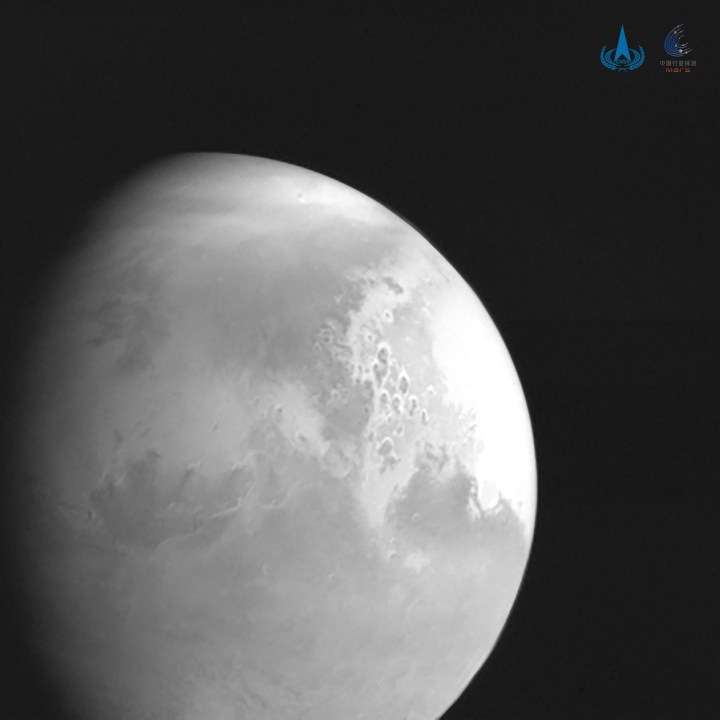
China has become just the third nation to land a spacecraft on the surface of Mars, joining the U.S. and Russia in that achievement. China’s Zhurong rover, named after a traditional Chinese fire god, has touched down on the martian surface, the China National Space Administration (CNSA) confirmed on the morning of Saturday, May 15.
The rover is part of the Tianwen-1 mission, which consists of an orbiter, a probe, and a lander. The mission was launched in summer last year, and took seven months to complete its journey to the red planet. It arrived at Mars in February this year, and since then the spacecraft has been performing operations such as capturing images of Mars, like the one shown above.
Believe it or not, traveling to Mars is actually the easy part of such a mission. The truly hard part is landing on the planet’s surface, as landers must contend with factors like the planet’s thin atmosphere, its variable dust storms, and a communication delay betweenMars and Earth. This delay makes it impossible for people in mission control on Earth to control a craft in real time as it approaches the planet, so the landing must be performed autonomously.
To slow its speed as the lander approached the surface, it used both a parachute and a retrorocket in its own “seven minutes of terror” as it moved through the atmosphere. It then landed in the Utopia Planitia area, a large impact basin, part of which was exploded by NASA’s Viking 2 lander in the 1970s.
This makes China the first country to make a successful landing on Mars on its first mission to Mars.
According to China’s state news agency Xinhua, President Xi Jinping said he was sending “warm congratulations and sincere greetings to all members who have participated in the Mars exploration mission.”
The rover will now begin its three-month mission to explore the Utopia Planitia area, where it will be searching for surface and subsurface ice. The mission will involve both the rover and the orbiter working in concert to create a map of water ice, with the orbiter focusing on the planet’s polar regions.


